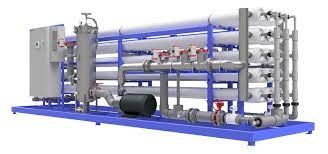The effect of salt rejection, electric conductivity on reverse osmosis membrane performances
DOI:
https://doi.org/10.31943/gw.v14i2.458Keywords:
Fluks, membrane, permeability, reverse osmosis, SWROAbstract
Process water has an important role in the petrochemical industry as a steam plant and cooling process. Sea water reverse osmosis seawater is processed through a Reverse osmosis Membrane serves to reduce the value of Total Disolved Solids contained in seawater. The performance of Sea Water Reverse Osmosis can be seen from the value of Flux, Coefficient of Permeability to TDS value and Salt Rejection. This research was conducted in February – March 2022 located at the SWRO unit of PT TPPI Tuban Regency, the methodology used was quantitative descriptive analysis based on field data which was then processed using Microsoft Excel. The results showed that the flux value of a membrane affects SWRO performance where the flux value is directly proportional to TDS and inversely proportional to salt rejection. The permeability coefficient is directly proportional to TDS and inversely proportional to salt rejection. The largest flux result is 12.623 L/m2H permeability coefficient of 4508 L/m2. H.atm with TDS value of 420.88 mg / L and salt rejection of 97.844%. The flux is directly proportional to the permeability coefficient.
Downloads

Downloads
Published
How to Cite
Issue
Section
License
Copyright (c) 2023 Elli Prastyo, Farlina Hapsari

This work is licensed under a Creative Commons Attribution 4.0 International License.
The use of non-commercial articles will be governed by the Creative Commons Attribution license as currently approved at http://creativecommons.org/licenses/by/4.0/. This license allows users to (1) Share (copy and redistribute the material in any medium) or format; (2) Adapt (remix, transform, and build upon the material), for any purpose, even commercially.









